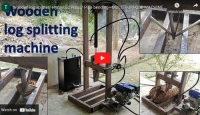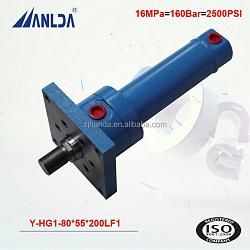
Originally Posted by
BuffaloJohn

That cylinder might work, and certainly would give better support, but moving the work closer to the end is the most effective way to push. While the push end will have significantly better support, with a wobbly frame and wobbly tool frame, the rod would still have lateral movement. And, if I read correctly that the goal is to go from 2" to 4" diameter, remember that force is pi * radius^2 * pressure, your force increase is 2^2/1^2 = 4 times which would be a 16ton force...
As for the glasses, if they came with the welder, they might be usable, but it would be interesting to learn what the actual shade is. The normal minimum for most welding is 10 but often for comfort, a shade of 11 or 12 and sometimes up to 14 is used.
As for cleaning joints, you might not see a difference just looking at the weld, but there are some things you can do to get better. Cleaning up the joint is just a must do thing, be it rust or paint or mill scale or oil or grease or any other contamination.
If you have some scraps, run tests. For one, take two pieces of rusty scrap and weld them together and then cut the joint perpendicular to the weld - looking at the penetration. You would be amazed how well rust welds hold for a while. But once rusted, it does not get better and can get worse. At some point, after repeated stress on the joint, eventually it will fail.
Another thing to look for is heating of the joint. You want heating and the welding arc is your heat source. You can see heat by looking at the color of the metal before versus after welding - should see blue coloration, both front and back of the metal. You should experiment with dropping the current a little and slowing down the weld so that more heat gets into the metal (you can drop too far and you don't heat up enough). Welding is not a race - going a little slower can make a much better weld. Find a way to support yourself - that makes the position of the arc much more stable and gives you better control. When I weld, I try to not have too many joints that can move - those joints being my body - so I prop myself, lean against stable things, get one handfully supported (the non-welding hand), get on my knees to get closer to the weld, etc. Sometimes with a stick, as you are learning, you prop the stick arm against the other arm. You need freedom of motion of the stick hand, but you want to be as stable as possible. You need to try different things.
Once you get more stable, practice, practice, practice. Then, start to do other things to improve the weld - pushing the arc, pulling the arc, sweeping the arc back and forth - all things to read about and then try.


 LinkBack URL
LinkBack URL About LinkBacks
About LinkBacks


 Reply With Quote
Reply With Quote






Bookmarks